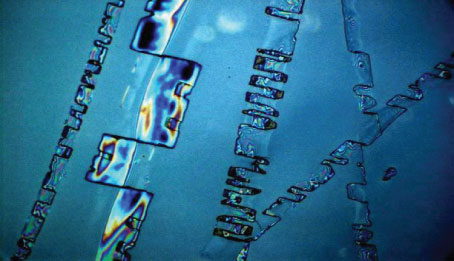
The WUN Spintronics Consortium consists of more than 30 partners including 9 WUN universities. The consortium brings together the expertise of the partners and carries out collaborative research with the aim of impacting significantly on science and society.
Aims of the project
To achieve major breakthroughs in the exciting but challenging area of spintronics, which is playing an increasingly significant role in high-density data storage, microelectronics, sensors, quantum computing and biomedical applications among others. The multi-disciplinary nature of spintronics requires expertise in electronics, material science, physics and computer science. There are more than ten WUN universities with world-leading research groups in spintronics and related areas.
Why Spintronics?
Spintronics has the potential to be one of the most exciting and challenging areas in nanotechnology, important to both fundamental scientific research and industrial applications.
Within the context of spin-electronics, both the electron spin and the charge, is manipulated for the operation of information processing circuits, based on the fundamental fact that electrons have spin as well as charge. These spintronic devices, combining the advantages of magnetic materials and semiconductors, are expected to be non-volatile, versatile, fast and capable of simultaneous data storage and processing, while at the same time consuming less energy.
They play an increasingly significant role in high density data storage, microelectronics, sensors, quantum computing, biomedical applications, etc. The expected impact of spintronics on the microelectronics industry might be comparable to the development of the transistor radio 50 years ago.
However, the multi-disciplinary nature of spintronics requires a joint effort by institutions with expertise in electronics, material science, physics and computer science. This multi-disciplinary approach might be the key to achieving major breakthroughs in this exciting but challenging area.
The consortium carries out research in the following four key areas:
- Understanding fundamental physics such as the spin-dependant transport across the magnetic/semiconductor interface and spin coherence length in semiconductors
- Synthesising spintronic materials with Curie temperatures above room temperature, large spin polarisation at the Fermi level and matching conductivity between the magnetic and semiconductor materials
- Utilising Nanofabrication techniques—fabricating devices with nanometer feature sizes and developing new techniques for mass production
- Integrating spin-devices with microelectronics and quantum computation.
Conferences
Since 2007, several WUN-SPIN conferences have been held across the globe to bring together leaders in the field, facilitate innovation and encourage the development of new expertise.
London (2019)
4th International Conference on Magnetism and Magnetic Materials. London August 19-20, 2019 London, UK
Nanjing (2018)
Professor Yongbing Xu, Conference Co-chair, 4th International conference on The Advances in Functional Materials (AFM), August, 2018, Nanjing
Sydney (2012)
Recent developments in the emerging field of spintronics were discussed at the WUN-SPIN 2012 conference hosted by the Worldwide Universities Network and the Australian Centre for Microscopy and Microanalysis at the University of Sydney in July 2012. The keynote lectures were delivered by Professor Hideo Ohno of Tohoku University and Professor Stuart Parkin from IBM and Stanford University, both pioneers in the science and application of spintronic materials. It was the first time the WUN Spintronics Consortium met in the southern hemisphere and more than 120 scientists from 20 countries attended the event.
WUN-SPIN 2012 Event Website
WUN-SPIN 2012 Photo Gallery
Illinois (2010)
WUN-SPIN10 took place at the University of Illinois Urbana-Champaign’s Beckmann Institute and focused on new scientific and technological developments in the field of spintronics, in particular spintronic applications and the impact on technology, with topics ranging from diluted magnetic semiconductors to spintronic device simulation. It was followed by a summer school on “Green’s Function and Other Electronic-Structure Methods for Materials Property and Device Prediction” organized by the NSF-funded Materials Computation Center.
Nanjing and Zhejiang (2008)
WUN-SPIN 2008 was co-sponsored by the University of California Santa Barbara and the Institute of Electrical and Electronic Engineers. The Zhejiang activities involved a summer school aimed at young researchers.
York (2007)
WUN-SPIN 2007 was co-sponsored by the University of York and the University of California Santa Barbara, and co-chaired by their Professor David Awscholom, a key expert in the field, and York’s Professor Xongbing Xu. The conference theme was Spintronic devices. This first conference was well attended with over 150 delegates.
In the Media
Selected outcomes
Academic Publications (see here)
- 20 academic papers published in 2019
- 30 academic publications in 2018
- 12 academic publications in 2016
- Nine research papers published in 2014.
- “Handbook of Spintronics” Volume 2, published by Springer, forthcoming in 2015.
- Awarded £198,093 by the University of York for European Commission self-aligned high-resolution organic ferroelectric transistor (2012- 2014).
- Awarded £850K by Natural Science Foundation of China to explore Ultrafast Spin Resolved Photoemission, 2014.